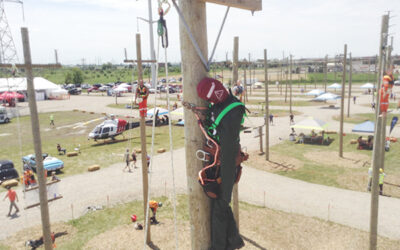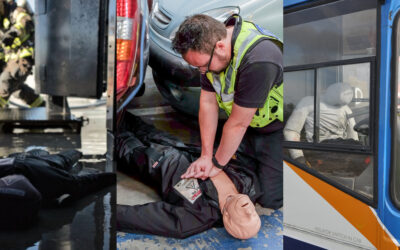If you manage a property which houses a large number of residents, many of which have complex needs in terms of their mobility, you will no doubt have considered how best you might evacuate everyone safely in the event of an emergency.
PEEPS (Personal Emergency Evacuation Plans) should be written for any resident who is unable to safely walk unaided, and these must be tailored to the individual’s needs. Each PEEP should give detailed information on this person’s movements during an evacuation and importantly, all members of staff should be aware of these instructions and be confident in their ability to carry them out to the letter.
Likewise, if someone is found unconscious, there should be a different procedure in place which is understood by all staff in case on an emergency situation.
VERTICAL AND HORIZONTAL EVACUATION
Depending on the style and size of your residence, you may need to consider both vertical and horizontal evacuation procedures.
Vertical Evacuation (using a stairway) is usually the preferred method of exiting a building in an emergency. Simply put, this refers to using the stairs to get everyone who is usually housed above the ground floor out of the building quickly. However, generally speaking this method is for those who are able to evacuate a building with minimal assistance. Ideally, you should house those with mobility needs on the ground floor, where possible.
However, in some larger premises, the evacuation procedures and plans are designed to allow for horizontal evacuation, where people who are not in imminent danger can delay starting their evacuation.
This means that fire escape routes do not become congested and a danger in themselves.
Horizontal, phased evacuation is the method of moving people away from the area of danger to a safer place on the same floor. This type of evacuation is usually required where a resident cannot use exit stairs to get outside and must remain on a particular floor until assistance arrives. This is one reason why using fire doors properly is so important, as they help to create fire resistant compartments.
However, depending on the fire situation it may ultimately be necessary to attempt a vertical evacuation with these residents too and therefore, a resident’s PEEP should have listed the preferred method of moving that person down a flight of stairs.
TRAINING FOR EVACUATION
In order to ensure that evacuation procedures run smoothly it is important to conduct regular training. This is in fact a legal requirement and forms part of fire regulations.
The Regulatory Reform (Fire Safety) 2005 covers general fire and safety in England and Wales. This gives details of what is expected in terms of training for an evacuation. Section 15, “Procedures for serious and imminent danger and for danger areas” states:
(1) The responsible person must—
(a)establish and, where necessary, give effect to appropriate procedures, including safety drills, to be followed in the event of serious and imminent danger to relevant persons;
(b)nominate a sufficient number of competent persons to implement those procedures in so far as they relate to the evacuation of relevant persons from the premises;
Therefore, conducting regular drills, and ensuring that enough staff are competent (to manage shift patterns etc) is vital to ensure compliance with fire regulations. Effective fire routine is dependent on regular training and practice – as with all learnings, the more frequently we train, the better we become.
You should write a detailed fire emergency evacuation plan and this should include instruction on the general procedures, instructions for individual PEEPs and details of any training needed for employees.
Remember too that you should think ‘out of the box’ and consider different scenarios. Carry out regular drills using a variety of escape routes, assuming that the normal and most direct evacuation route is not always possible. It is surprising how much this can throw someone off in an emergency.
Practise both horizontal and vertical evacuation techniques and consider ‘worst case scenario’ plans which see those who would normally be covered in a horizontal evacuation, moved vertically. In this situation, specialist equipment may be needed so this is also the time to make sure that staff are well trained in using evacuation equipment such as Evac Chairs or evacuation board and sledges.
Having to use this equipment for the first time in a genuine emergency is a recipe for disaster and could lead to serious injury to those being evacuated, or the handler.
HOW USING MANIKINS CAN HELP YOUR TRAINING
When teaching use of evacuation equipment, we would recommend the use of training manikins, not least because it greatly reduces the risk of injury to either the person doing the lifting and handling or to a volunteer if lifted incorrectly.
At Ruth Lee Ltd we have been providing rescue training manikins for more than 30 years and we have a range well-suited to care home evacuation. This includes our Patient Handling manikin, which will sit upright in a wheelchair if required, and a range of bariatric manikins. It is a sad fact that the population is getting larger and heavier – would you staff be confident to evacuate a heavy resident in a genuine emergency? Consider introducing bariatric training into your routine training schedules.



